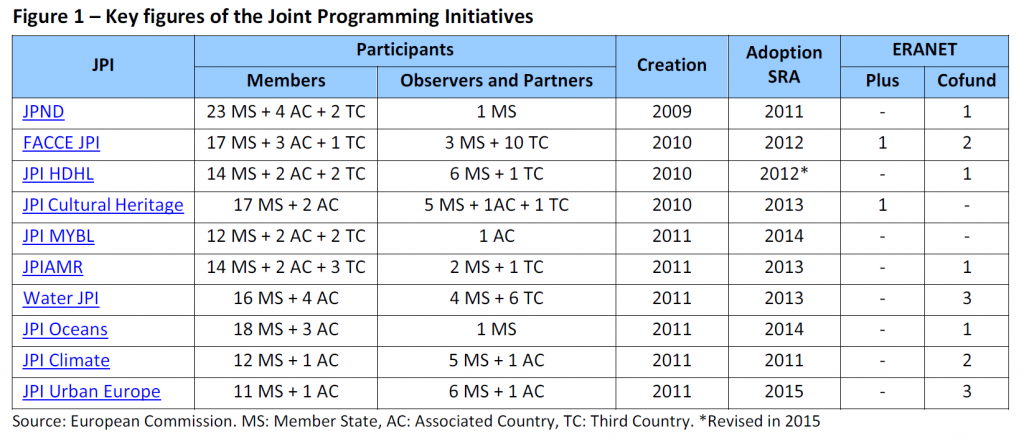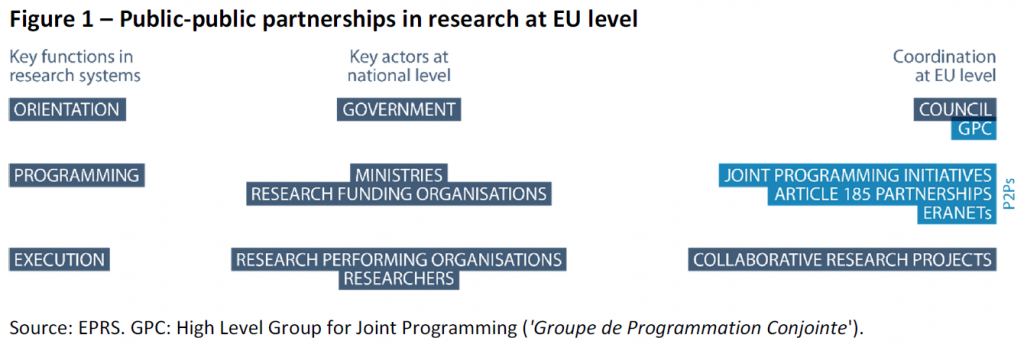Written by Vincent Reillon,

Since 1974, the objective of coordinating national research policies to create a pan-European research system has been at the heart of European research policy. However, despite a long history of efforts to coordinate research policy throughout the EU, barriers remain at Member State level. In 2000, the launch of the European Research Area (ERA) concept aimed to address the fragmentation of European research resulting from topics and research programmes being defined at national level. As a result, EU public-public partnerships were developed to support national research funding organisations and ministries for research in aligning their research programmes.
The ERANET scheme was the first instrument developed in 2002 to support joint programming of national research activities. The ERANET scheme created European networks of programme owners and programme managers from national or regional research funding institutions fostering mutual knowledge and exchange of good practice. However, this instrument revealed the administrative and legal barriers at national level that prevent the implementation of transnational joint programmes. Despite some developments, the scheme has a limited impact on the fragmentation of the research landscape.
Article 185 initiatives are policy initiatives from Member States on a given research area, supported by EU funds from the framework programme for research. They were promoted by the Commission in 2001 as an instrument to implement the joint programming of research activities. The first initiative on a ‘European and Developing countries Clinical Trial Partnership’ was adopted in 2003. The objective of Article 185 initiatives is scientific, managerial and financial integration of national research programmes at the European level in a given field. Five partnerships have been established so far and another one is planned. However, the implementation of the three levels of integration have been hindered by a lack of political will to remove the existing legal and administrative barriers to transnational funding.
Despite these two initiatives, the overall research budget coordinated between the Member States remained low (around 15% of the total research budget in the EU). In 2008, to push the coordination process further, the Commission proposed joint programming. This high-level strategic process would be led by the Member States and designed to better coordinate national research activities at the EU level. Joint programming also aimed to pool national resources to address European or global challenges such as climate change. Ten Joint Programming Initiatives (JPIs) were set up between 2009 and 2011 to implement this concept.
The JPIs developed joint strategic research agendas (SRA) in their respective areas and started to issue joint calls for research projects. However, evaluation of this initiative revealed a continued lack of political and financial commitment from the Member States, and the persistence of administrative and legal barriers. In order to fully implement joint programming, Member States are expected to modify their research systems to align their national programmes, priorities or activities with the adopted SRAs. The goal of creating a pan-European research system seems further away than ever.
Find more in-depth information in our publications on the topic:
- Public-public partnerships in research: The joint programming process
- The Joint Programming Initiatives
- Article 185 initiatives
- The ERANET scheme












Be the first to write a comment.